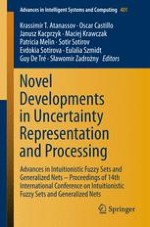This volume contains, first of all, the papers presented at the Fourteenth International Workshop on Intuitionistic Fuzzy Sets and Generalized Nets (IWIFSGN-2015) held on October 26-28, 2015 in Cracow, Poland. Moreover, the volume contains some papers of a particular relevance not presented at the Workshop. The Workshop is mainly devoted to the presentation of recent research results in the broadly perceived fields of intuitionistic fuzzy sets and generalized nets initiated by Professor Krassimir T. Atanassov whose constant inspiration and support is crucial for such a widespread growing popularity and recognition of these areas. The Workshop is a next edition of a series of the IWIFSGN Workshops organized for years by the Systems Research Institute, Polish Academy of Sciences, Warsaw, Poland, Institute of Biophysics and Biomedical Engineering, Bulgarian Academy of Sciences, Sofia, Bulgaria, and WIT -- Warsaw School of Information Technology, Warsaw, Poland, and co-organized by: Matej Bel University, Banska Bystrica, Slovakia, Universidad Publica de Navarra, Pamplona, Spain, Universidade de Tras-Os-Montes e Alto Douro, Vila Real, Portugal, Prof. Asen Zlatarov University, Burgas, Bulgaria, Complutense University, Madrid, Spain, and the University of Westminster, Harrow, UK.
